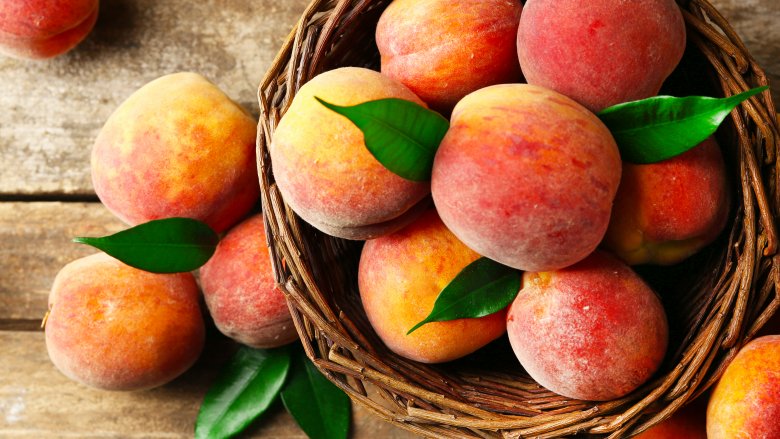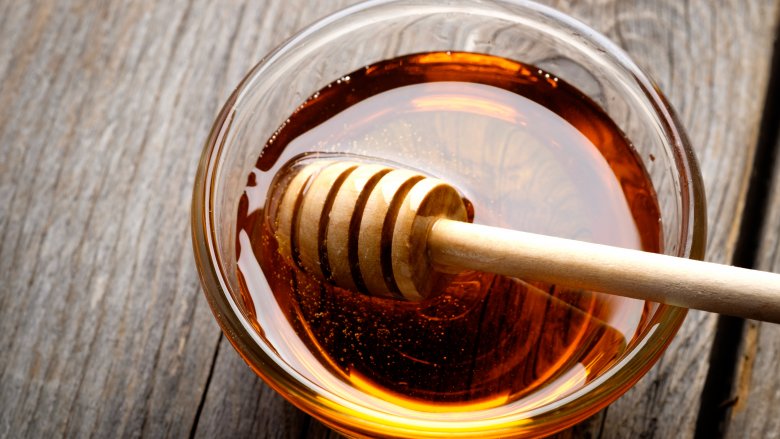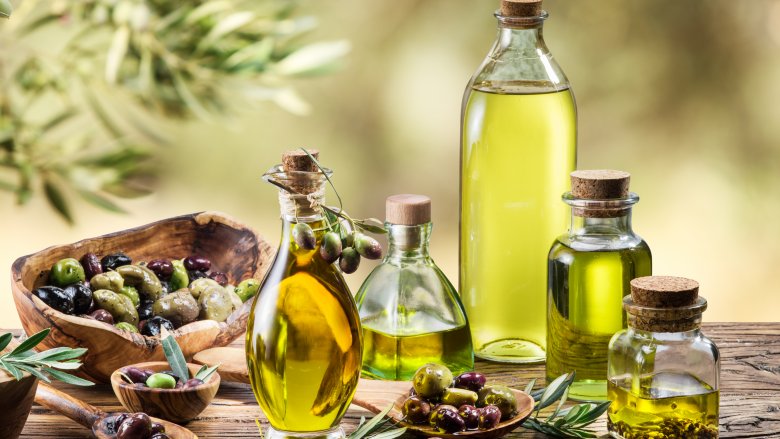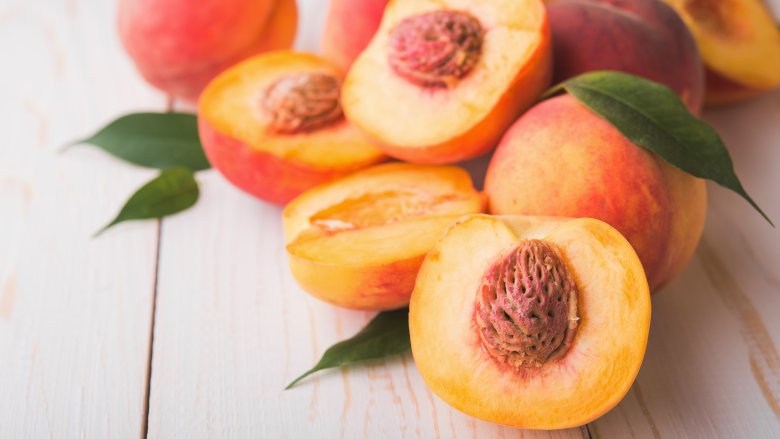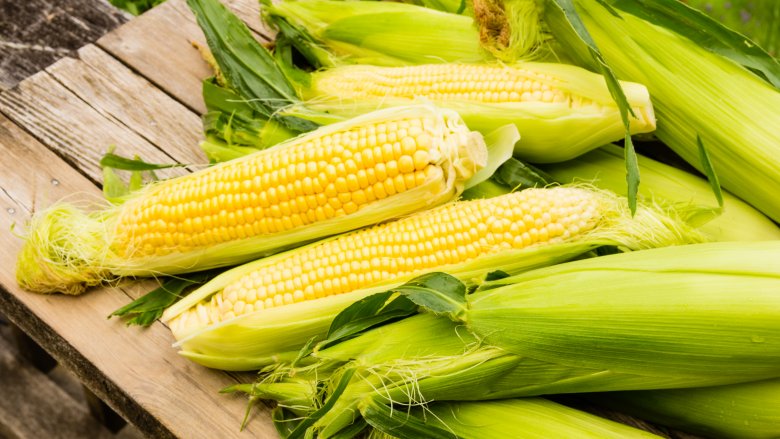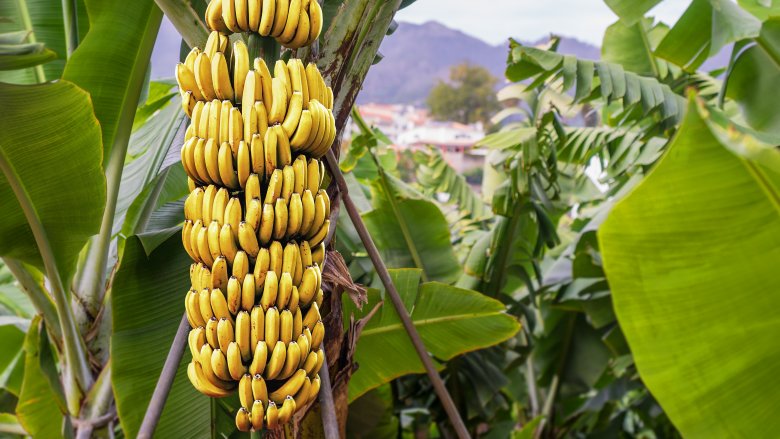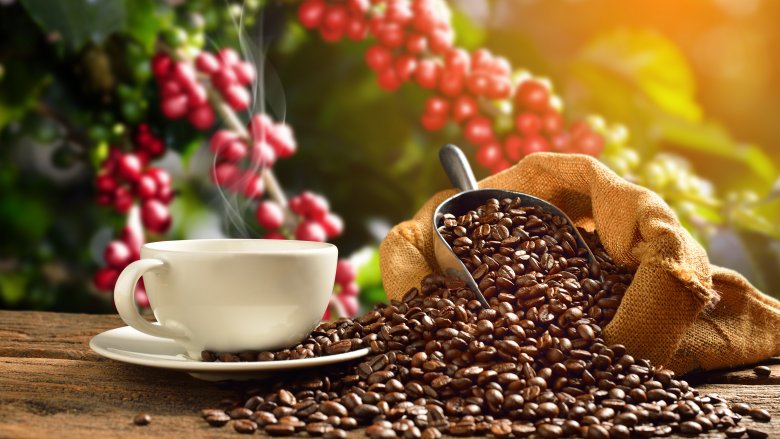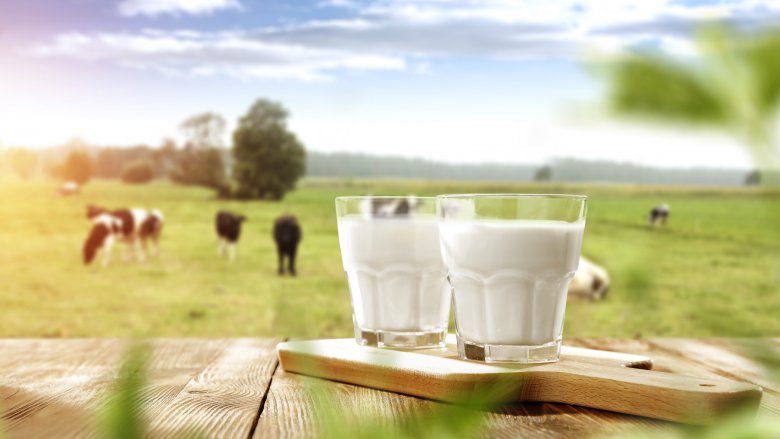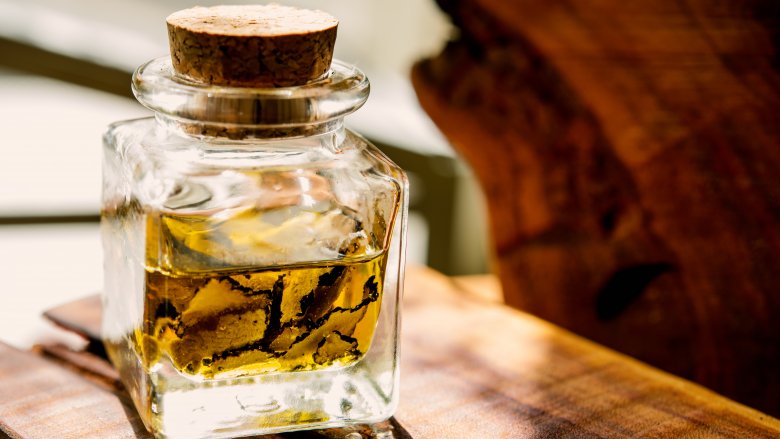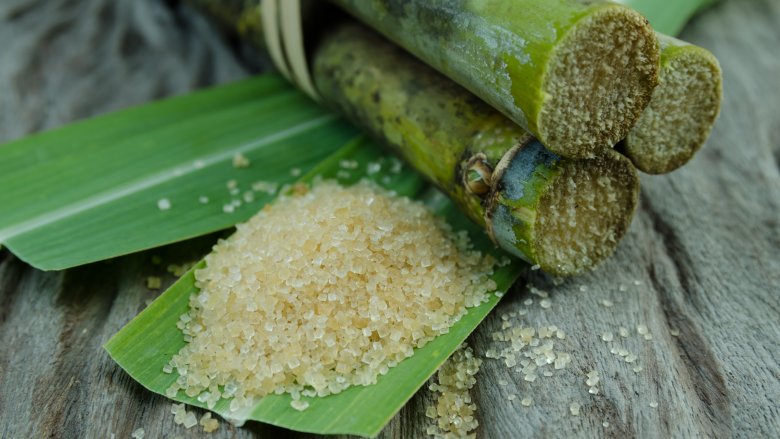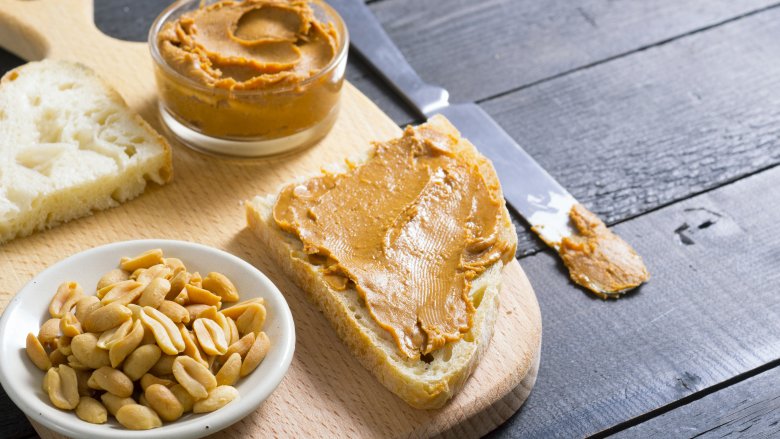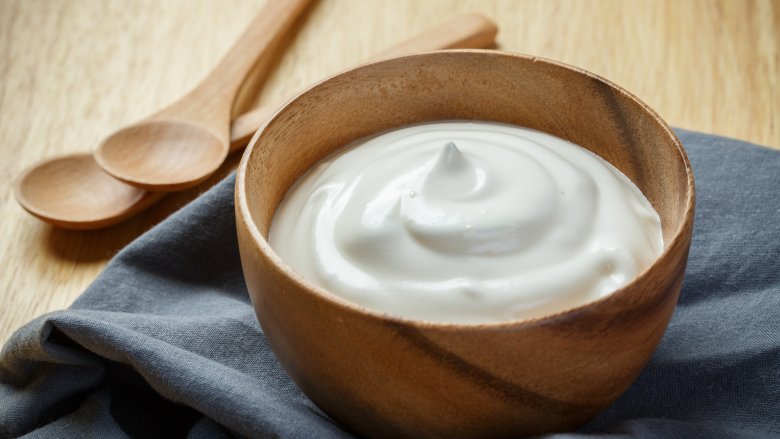Foods You Had No Idea Were Not Natural
It goes almost without saying that you want to put only the very best food on your table, whether it's breakfast, lunch, or dinner. When you're at the grocery store, you're confronted with a truly mind-numbing number of choices, and you couldn't possibly go wrong if you're reaching for the foods labeled "all natural"... right? It turns out, not even the FDA has official rules on what can and can't be labeled as "natural," and not all the foods you thought were natural even come close.
Honey
Honey is most certainly a natural byproduct of a pretty incredible creature, but if you're sure that's what you're picking up at the grocery store, you might be mistaken. In 2011, Food Safety News tested a variety of honey from major brands, and found that around 75 percent of them didn't contain pollen. More than 60 jars were tested by scientists, and they found most had their pollen processed out.
According to what Honey Tree, Inc. (manufacturers of Winnie the Pooh honey) told them, pollen is often filtered out of honey because consumers want a clear product. Most companies refused to talk about it, though.
That might just be the tip of the iceberg, because according to reports published by the EU in 2016, there's a ton of fake honey on shelves. They define fake honey as honey that has sugar syrups added to stretch a little bit of real honey much, much farther. Check out this video to see the difference.
Olive oil
Olive oil is so trendy it even has a trendy name — EVOO — but that popularity has come with a price. According to Forbes, olive oil has been the most adulterated food for years, dating back to at least 1980. More recently, a 2011 study from the Olive Center found top brands weren't up to snuff about 73 percent of the time.
That's a huge deception, and authorities are cracking down on the problem. In 2014, there were 95 fake olive oil seizures in Italy alone and even more shockingly, it's been linked to being a tried-and-true source of income for the Italian mafia.
If you're not getting the real stuff, what are you getting? According to the American Council on Science and Health, you're getting a bit of EVOO with a lot of refined pomace olive oil, and lower quality oil that's so different scientists can detect contamination down to a single percentage point. There's added waxes, sterols, and alcohols, and it's definitely not all-natural.
Peaches
Peaches are delicious, but artificial? It turns out, they sort of are, as none of the peaches we know and love ever occurred naturally. James Kennedy is a chemistry teacher at Haileybury Institute in Australia, and he took a look at exactly what a 100 percent natural peach should look like. Spoiler alert: it's nothing like the peaches we get in the store.
In its natural, pre-domesticated form, there were only three varieties of peaches and they were all found in China. Around 4000 BC, Chinese farmers started selectively breeding peaches by picking the trees with the biggest and sweetest fruit to cultivate. The all-natural peach has 64 percent edible flesh, compared to the 90 percent of our modern peaches. Originally equal parts salty, sweet, and sour, thousands of years of breeding has created more than 200 separate species of bigger, juicier, and sweeter peaches... that weren't created by Mother Nature.
Sweet corn
Have you ever seen sweet corn growing wild? Not so much, right? That's because mankind not only carefully cultivated it over thousands of years, but we changed it so much it lost the ability to grow wild.
In 2005, researchers from the University of California traced corn back 6000 years, and found that of corn's 59,000 genes, 1,200 had been targeted by selective breeding and changed drastically. An actual ear of naturally growing corn was between 2 and 3 inches long, had a maximum of 12 kernels, and was covered in a coating that couldn't be digested by humans or animals. The remnant of that coating is the bit of tissue you might get stuck to your teeth, the most annoying — and natural — part of today's corn.
Bananas
Once we tell you how artificial bananas are, you'll be able to see it in every bit of them. There's no seeds, and when you unwrap a banana, you know what you're going to get. They're the same size, the same color, the exact same flavor... suspicious yet?
Wired took a look at the weird history of the banana, and it started in the 1950s with the United Fruit Company. They took banana plantations and standardized the banana into the Gros Michel, and since they were grown by cloning them through propagation of suckers, they were all 100 percent identical. They also say they were so genetically similar you even might identify them as a single, collective organism.
Every Gros Michel was equally vulnerable to Panama disease, and it wiped out all banana plantations. Because we didn't learn the first time around, United Fruit Company took the Panama disease-resistant Cavendish and did the same thing. They were cloned into the identical organisms you pick up at the store today, and if that's not the creepiest thing you'll ever eat, it's definitely in the top ten.
Coffee
You know coffee is roasted, but even if you can forgive that sort of processing you should know coffee is, by no stretch of the imagination, natural.
Before coffee is even roasted, it's fermented to flavor and layers of the bean are removed. According to Forbes, the more and more demanding the world gets about their coffee, the more and more it's processed. Coffee producers use this fermentation process almost like winemakers do, adding flavors, adjusting sugar content, making it more or less acidic. So-called natural coffee is out there, and it's the stuff that's just left to dry then shipped off to export. (That's most Brazilian coffee.) But washed coffee can be fermented for as long as a week, and that's actually what most other coffees are.
It's entirely possible the caffeine in your coffee is completely synthetic as well. The American Chemical Society found a difference in carbon isotopes that can be seen between natural and synthetic caffeine, and no, companies don't need to differentiate between the two in their labeling.
Milk
We'll give milk the benefit of the doubt, and accept that it needs to be treated and pasteurized to make it safe for consumption. But, let's say you pick up some whole milk. You expect it to be pretty close to what came out of the cow, right?
Not so fast. Forbes took a look behind the curtain at what happens to milk after it's taken from the dairy to the processing plant. All milk — even the stuff that's going to be used to make cheese or yogurt, and definitely whole milk — is processed through a separator. That takes out the debris and sediment, but it also removes all the fat. It's all turned into skim milk, then whole milk is made by adding the right amount of fat back in.
What? Why? Because milk's fat content is hugely variable, and depends on everything from the time of the year to climate, feed, and the breed of the cow it came from. Stripping all the fat out then adding it back in — then processing it some more to make sure it's not going to separate — is the only way to get a consistent product.
Truffle oil
In 2011, MasterChef audiences were treated to a meltdown of epic proportions. It started when one finalist used truffle oil in her dish, and she was equally berated by both Gordon Ramsay and Joe Bastianich (via The LA Times). Surely, it's just oil made from truffles, right? What's the problem?
Serious Eats talked to Chef Ken Oringer from Clio, and he agreed with the idea it shouldn't be allowed in the kitchen. It's not made from truffles at all, it's actually just olive oil mixed with a compound called 2,4-Dithiapentane. Sometimes it's a natural substance, and other times it comes from petroleum. Take a good, deep whiff of truffle oil now that you know that, and then tell us you can't smell gasoline. If you've never liked the taste of it, you can officially go back and complain to everyone who criticized your palate, because you were totally right.
Sugar
There is such a thing as natural sugar, and it's entirely possible you've heard horror stories about how you shouldn't eat too much fruit because of the natural sugar content. It's not the same as eating a pack of Oreos, right?
Tangents aside, let's talk about the difference. According to the American Council on Exercise, the sugars contained in fruits come in a package that's filled with things like vitamins and fiber that slows the rate it's absorbed into the body. Refined sugars — even though they come from natural things like sugar beets and sugar cane — aren't just highly processed, but they're a manufactured version of fructose and glucose extracted and combined to form sucrose. They're not the same thing, and ACE says that's why your body reacts differently to different sources of sugar.
Peanut butter
Peanut butter is another one of those kitchen staples that seems a lot more straightforward than it actually is, and The Atlantic suggests it was peanut butter that kick-started the whole debate over what's natural and what's not. It started in the 1940s, when peanut butter wasn't just peanuts. Glycerin was added to keep the oil from separating, and if you take a look at the peanut butter that's labeled "natural," you'll notice a heavy coating of oil on the top. That's because it doesn't contain these extra chemicals — the ones big-name brands like Peter Pan, Skippy, and Jif all do.
The first company to add hydrogenated oils to peanut butter was Heinz, and that was in 1923. The process — hydrogenation — made peanut butter popular, but by the 1950s peanut butter was becoming less and less peanut-flavored. Laws changed in 1971, when the FDA decided that in order to be called peanut butter, a product had to be at least 90 percent peanuts. The other 10 percent? Not natural.
Yogurt
According to Los Angeles Magazine, the yogurt industry isn't just a multi-billion dollar industry, but companies are trying to capitalize on the popularity of yogurt by seeing who can come up with the wildest combinations, flavors, and names. There's Greek yogurt, of course, but there's also farmstyle, low-fat, fat-free, Icelandic... so let's face it, you just pick your favorite flavor, right?
Not all yogurts are made equally, and there's some that are more natural than others. Fortunately, there are some simple things to look for that'll help you avoid the unnatural stuff. Look for high fructose corn syrup, artificial flavors, and artificial colors, to start with. None of those are natural, and neither are low-fat or fat-free yogurts. You should give them a miss, too, and Spoon University says this is one of those cases where the full-fat version of something is actually much, much better for you. Low-fat and fat-free yogurts have been processed more, have more added sugar, and less of the good stuff like protein. Next time you reach for those yogurts, think unnatural.
